Introduction
The top 10 high leading causes of death in the United States, according to the Centers for Disease Control and Prevention (CDC), are:
- Heart disease
- Cancer
- COVID-19
- Stroke
- Lung disease
- Accidents (unintentional injuries)
- Alzheimer’s disease
- Diabetes
- Influenza and pneumonia
- Kidney disease
Note that the ranking of these causes of death may vary depending on the source and the time frame being consider.
Learn more about diseases
Heart disease – Causes of death

Heart disease is a major public health concern in the United States. According to the Centers for Disease Control and Prevention (CDC), it is the leading cause of death for people of all gender in the country, accounting for 1 in every 4 deaths.
Coronary artery disease (CAD) is the most common type of heart disease in the United States. It occurs when the arteries that supply blood to the heart become narrowed or blocked, usually due to a buildup of plaque (a mixture of fat, cholesterol, and other substances) on the inner walls of the vessels. This can lead to chest pain (angina), heart attack, and other symptoms. CAD is a leading cause of death and disability in the United States.
Other types of heart disease that are prevalent in the USA include heart failure, which occurs when the heart is unable to pump enough blood to meet the body’s needs; arrhythmias (abnormal heart rhythms), which can cause the heart to beat too fast, too slow, or irregularly; and congenital heart disease (heart defects present at birth).
Risk factors for heart disease include high blood pressure, high cholesterol, smoking, diabetes, obesity, physical inactivity, and unhealthy diet. Many of these risk factors are preventable or controllable through lifestyle changes and medical treatments.
Heart disease is a leading cause of death and disability in the United States, and it has a significant economic impact on the country. The annual direct and indirect cost of heart disease in the USA is estimating to be more than $200 billion. Despite this, it is also preventable and controllable through lifestyle changes and medical treatments.
CANCER -Causes of death

Cancer is a disease cause by the abnormal growth and division of cells in the body. There are many different types of cancer, each with its own set of characteristics and risk factors. Cancer can develop in any part of the body and can spread to other parts of the body through a process known as metastasis.
In the United States, cancer is the second leading cause of death, accounting for about 1 in every 4 deaths. A total of 1.9 million new cancer cases and 609,360 deaths from cancer are expecting to occur in the US in 2022, which is about 1,670 deaths a day. The most common types of cancer in the USA are lung, breast, prostate, colon, and skin cancer.
Lung cancer
Lung cancer is the leading cause of cancer death among people of all gender in the United States. It is mainly cause by smoking and exposure to secondhand smoke.
Breast cancer
Breast cancer is the most common cancer among women in the United States, and the second most common cancer overall. It is mainly cause by genetic mutations that occur during a woman’s lifetime, although certain lifestyle and environmental factors such as alcohol consumption, lack of physical activity, and exposure to certain chemicals increase the risk.
Prostate cancer
Prostate cancer is the most common cancer among men in the United States and the third most common cancer overall. It is mainly cause by genetic mutations that occur during a man’s lifetime, although certain lifestyle and environmental factors such as diet, obesity, and exposure to certain chemicals increase the risk.
Colon and rectal cancer
Colon and rectal cancer, also called colorectal cancer, is the third most common cancer in people of all gender in the United States. It is mainly cause by genetic mutations that occur during a person’s lifetime, although certain lifestyle and environmental factors such as diet, physical inactivity, and exposure to certain chemicals increase the risk.
Skin cancer
Skin cancer is the most common cancer in the United States. It is mainly cause by exposure to ultraviolet (UV) radiation from the sun or indoor tanning beds.
Overall, cancer is a complex disease that can be cause by a combination of genetic, lifestyle, and environmental factors. Many cases of cancer are preventable through lifestyle changes and early detection and treatment.
COVID-19 – Causes of death
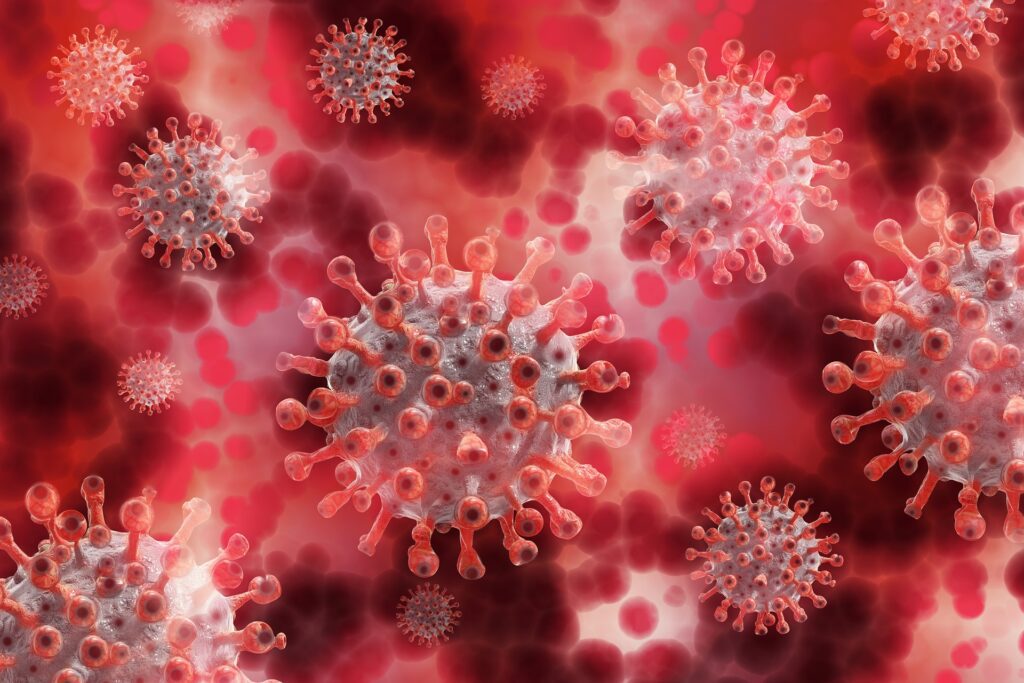
COVID-19, also known as coronavirus disease 2019, is a highly contagious respiratory illness cause by the severe acute respiratory syndrome coronavirus 2 (SARS-CoV-2). The virus was first identified in Wuhan, China in December 2019, and it has since spread to become a global pandemic.
In the United States, COVID-19 cases and deaths have been significant. As of my knowledge cutoff, the country has reported over 31 million confirmed cases and more than 560,000 deaths. The number of cases and deaths has fluctuated over time, with some states experiencing more severe outbreaks than others. The number of cases and deaths has also been affect by various factors, such as the availability and distribution of vaccines, the state’s reopening policies, and compliance with public health measures.
Symptoms of COVID-19 can range from mild to severe and can include fever, cough, shortness of breath, fatigue, body aches, headache, loss of taste or smell, sore throat, and congestion or runny nose. Some people with COVID-19 may have no symptoms at all. The virus primarily spreads through respiratory droplets produced when an infected person talks, coughs, or sneezes.
The best way to prevent COVID-19 is to get vaccinate, wear a mask, maintain social distance, and practice good hand hygiene. The vaccines have been show to be highly effective in preventing severe illness and death from COVID-19. People should consult with their healthcare provider and follow the guidance from the Centers for Disease Control and Prevention (CDC) for the most updated information about COVID-19.
Stroke – Causes of death
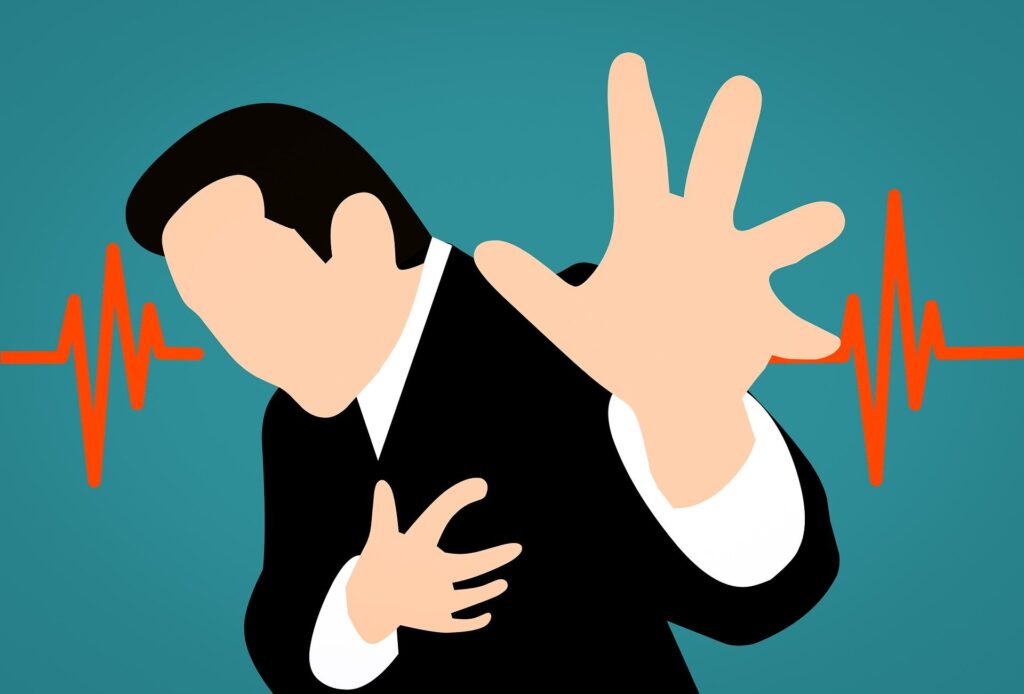
A stroke, also known as a cerebrovascular accident (CVA), is a medical condition in which the blood flow to a part of the brain is disrupting. This can occur in two ways: through a blockage, known as an ischemic stroke, or through bleeding, known as a hemorrhagic stroke.
In the United States, stroke is a leading cause of death and disability. According to the Centers for Disease Control and Prevention (CDC), it is the fifth leading cause of death and a leading cause of long-term disability. Each year, about 795,000 people in the United States have a stroke, and about 140,000 of them die. Stroke is a leading cause of serious long-term disability.
Symptoms of a stroke can include sudden numbness or weakness of the face, arm, or leg, especially on one side of the body; sudden confusion, trouble speaking or understanding; sudden trouble seeing in one or both eyes; sudden trouble walking, dizziness, loss of balance or coordination; and sudden severe headache with no known cause.
Risk factors
Risk factors for stroke include high blood pressure, smoking, diabetes, high cholesterol, atrial fibrillation, and family history of stroke. Many of these risk factors are preventable or controllable through lifestyle changes, such as eating a healthy diet, maintaining a healthy weight, and getting regular physical activity, and medical treatments.
Treatment for stroke may include medications, surgery, and rehabilitation. The treatment options will depend on the type of stroke, the cause, and the severity of the symptoms. It’s important for people to seek immediate medical attention if they suspect they or someone else is having a stroke. Time is critical when it comes to stroke, and prompt treatment can make a significant difference in the outcome.
Lung disease – Causes of death
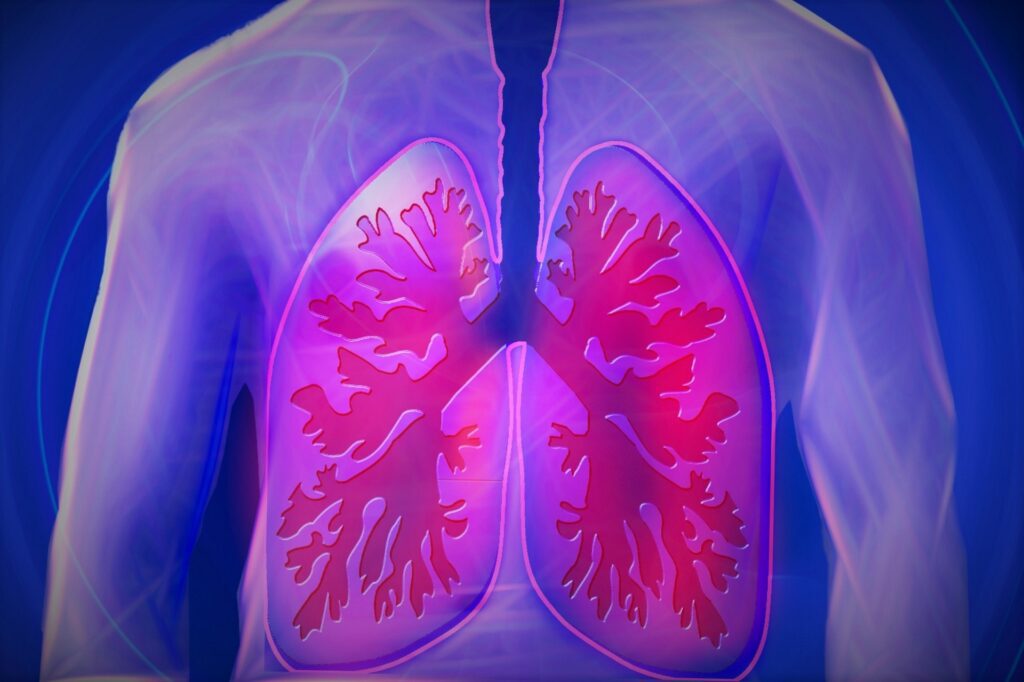
Lung disease refers to a group of conditions that affect the lungs and the airways that lead to the lungs. The most common types of lung disease in the United States are chronic obstructive pulmonary disease (COPD), asthma, lung cancer, and pneumonia.
Chronic obstructive pulmonary disease (COPD) is a group of lung diseases that make it hard to breathe. The two main types of COPD are chronic bronchitis and emphysema. COPD is causing by long-term exposure to irritants that damage the lungs and airways, the most common of which is cigarette smoke. It’s the third leading cause of death in the United States.
Asthma is a chronic lung disease that inflames and narrows the airways, making it difficult to breathe. The symptoms of asthma include wheezing, coughing, chest tightness, and shortness of breath. Asthma can be cause by a combination of genetic and environmental factors, and it is more common in people who have a family history of the disease.
Lung cancer is the leading cause of cancer death among people of all gender in the United States. It is mainly cause by smoking and exposure to secondhand smoke.
Pneumonia is an infection of the lungs that can be cause by bacteria, viruses, or other organisms. It can cause symptoms such as fever, cough, chest pain, and difficulty breathing. Pneumonia is more common and more severe in people who have weakened immune systems, chronic lung disease, or other underlying health conditions.
Overall, lung disease is a major public health concern in the United States. Many cases of lung disease are preventable through lifestyle changes, such as quitting smoking and avoiding exposure to air pollution, and early detection and treatment.
Accidents (unintentional injuries)

Centers for Disease Control and Prevention (CDC) data shows that more than 200,000 people face death due to unintentional injuries.
Accidents, also known as unintentional injuries, refer to a wide range of events that cause harm to individuals due to lack of intent. In the United States, unintentional injuries are a leading cause of death and disability. According to the Centers for Disease Control and Prevention (CDC), unintentional injuries are the sixth leading cause of death in the United States. Also they data shows that more than 200,000 people face death due to unintentional injuries.
Unintentional injuries can be cause by a variety of factors, including falls, motor vehicle crashes, drowning, poisoning, and fires. Some examples of unintentional injuries include:
Falls
Falls: Falls are the leading cause of unintentional injury-related death among older adults in the United States. They can occur in a variety of settings, including homes, workplaces, and public places.
Motor vehicle crashes
Motor vehicle crashes: Motor vehicle crashes are a leading cause of unintentional injury death among all age groups in the United States. They can be cause by a variety of factors, including distracted driving, impairment, and poor road conditions.
Drowning
Drowning: Drowning is a leading cause of unintentional injury death among children and young adults in the United States. It can occur in a variety of settings, including swimming pools, lakes, and the ocean.
Poisoning
Poisoning: Poisoning is a leading cause of unintentional injury death among all age groups in the United States. It can be cause by a variety of substances, including drugs, chemicals, and carbon monoxide.
Fires
Fires: Fires are a leading cause of unintentional injury death among all age groups in the United States. They can be cause by a variety of factors, including smoking, cooking, and heating.
Many unintentional injuries are preventable through education, awareness, and safety measures. For example, wearing seat belts and helmets, installing smoke detectors and carbon monoxide detectors, and securing loose rugs and railings can help prevent accidents in the home. Public awareness campaigns, regulations, and laws can also help prevent unintentional injuries in the community.
Alzheimer’s disease – Causes of death

Alzheimer’s disease is a progressive brain disorder that affects memory, thinking, and behavior. It is the most common cause of dementia, a general term for a decline in cognitive ability severe enough to interfere with daily life. Alzheimer’s disease affects millions of people worldwide, including a significant number of people in the United States.
Symptoms of Alzheimer’s disease can include memory loss, difficulty completing familiar tasks, problems with language, disorientation, mood swings, loss of motivation, and changes in personality. The symptoms of Alzheimer’s disease get worse over time, and it is ultimately fatal.
The causes of Alzheimer’s disease are not fully understate. But it is believing to be a complex interplay of genetic, environmental, and lifestyle factors. Research suggests that a combination of genetic, lifestyle and environmental factors may increase a person’s risk of developing Alzheimer’s disease.
In the United States, Alzheimer’s disease is the 6th leading cause of death and it is estimating that over 6 million Americans have the disease. It is also the most expensive disease in the country, with the cost of care estimated to be around $305 billion annually.
There is currently no cure for Alzheimer’s disease, but there are treatments that can help manage the symptoms. Medications can help improve memory and thinking, and behavioral therapies can help manage behavior problems. There’s also support for caregivers and people living with Alzheimer’s disease, to help them cope with the challenges of the disease.
It’s also important to note that early detection and diagnosis can help people with Alzheimer’s disease and their families plan for the future, and access treatments and support services that can improve quality of life.
Diabetes – Causes of death

In the United States, diabetes is a significant public health concern. According to the Centers for Disease Control and Prevention (CDC), 34.2 million Americans, or 10.5% of the population, have diabetes. Of those, 7.3 million are undiagnosed. Additionally, 88 million American adults, or more than 1 in 3, have prediabetes, a condition that if not treated, often leads to type 2 diabetes within five years.
Diabetes is a chronic disease that affects the way the body uses blood sugar (glucose). It occurs when the pancreas does not produce enough insulin. Or when the body is unable to effectively use the insulin it produces. Insulin is a hormone that helps the body use glucose for energy.
Main types of diabetes
There are two main types of diabetes: type 1 and type 2. Type 1 diabetes is an autoimmune disorder in which the body attacks and destroys the cells in the pancreas that produce insulin. It is usually diagnose in childhood or adolescence and requires daily insulin injections. Type 2 diabetes, on the other hand, is the most common form of diabetes and occurs when the body becomes resistant to insulin or the pancreas does not produce enough insulin to keep blood sugar levels in a normal range.
Risk factors for diabetes include obesity, physical inactivity, family history, and advancing age. People who are higher-weight, physically inactive, or have a family history of diabetes are at higher risk of developing the disease. Additionally, people of certain racial and ethnic groups. Such as African Americans, Hispanic/Latino Americans, Indian Americans, Alaska Natives, Asian Americans and Pacific Islanders, are at higher risk of developing diabetes.
Diabetes can lead to a number of serious health complications, such as heart disease, stroke, kidney disease, blindness, and amputations. However, through regular physical activity, healthy eating, and maintaining a healthy weight. People can reduce their risk of developing diabetes or delay its onset. Additionally, early detection and proper management can help people with diabetes live healthy lives.
Influenza and pneumonia
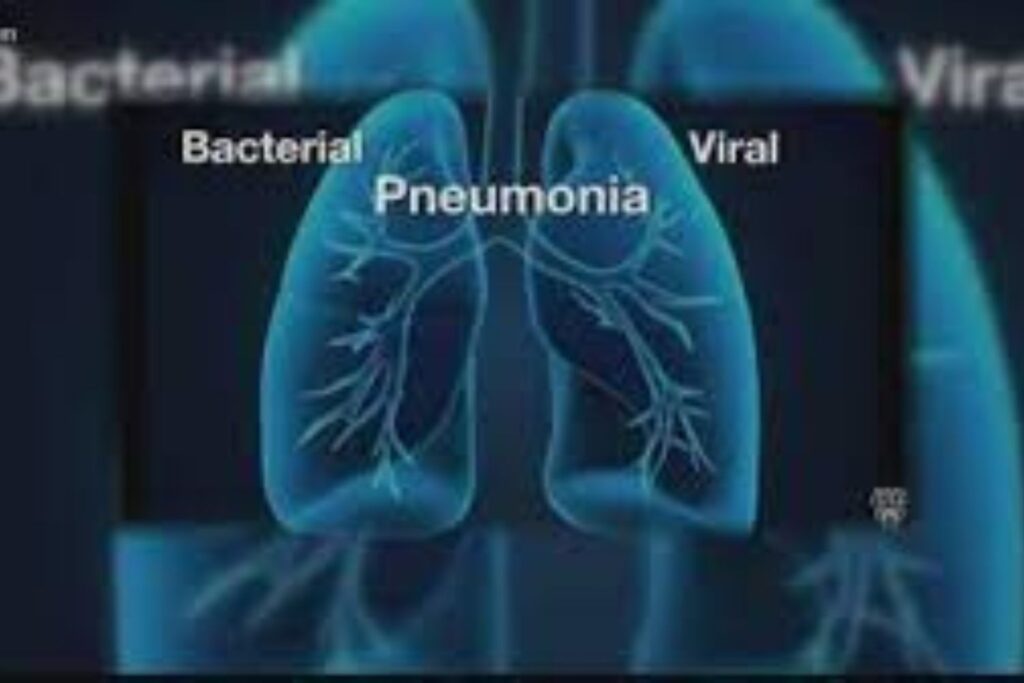
In the United States, influenza and pneumonia are significant public health concerns. According to the Centers for Disease Control and Prevention (CDC), influenza is responsible for an average of about 24,000 deaths. And more than 200,000 hospitalizations each year in the United States. Pneumonia is also a leading cause of death and hospitalization, particularly among older adults and people with underlying health conditions.
Influenza, also known as the flu, is a viral infection that affects the respiratory system. Symptoms of the flu can include fever, chills, cough, sore throat, muscle aches, fatigue, and congestion. The flu is highly contagious and can be spread through respiratory droplets. When an infected person talks, coughs, or sneezes.
Pneumonia is an infection of the lungs that can be cause by bacteria, viruses, or other organisms. Symptoms of pneumonia can include fever, cough, chest pain, and difficulty breathing. Pneumonia can be cause by a variety of organisms, including bacteria, viruses, and fungi.
The best way to prevent influenza and pneumonia is to get vaccinate. The flu vaccine is recommend for everyone 6 months of age and older. And the pneumonia vaccine for people who are at increased risk of developing the disease.
People should consult with their healthcare provider and follow the guidance from the Centers for Disease Control and Prevention (CDC) for the most updated information about influenza and pneumonia.
It’s important to note that influenza and pneumonia have similar symptoms and can be difficult to distinguish between them. Therefore, it is important to seek medical attention if you have symptoms that are severe or that don’t improve after a few days, particularly if you are at high risk of complications from influenza or pneumonia.
Kidney disease – Causes of death
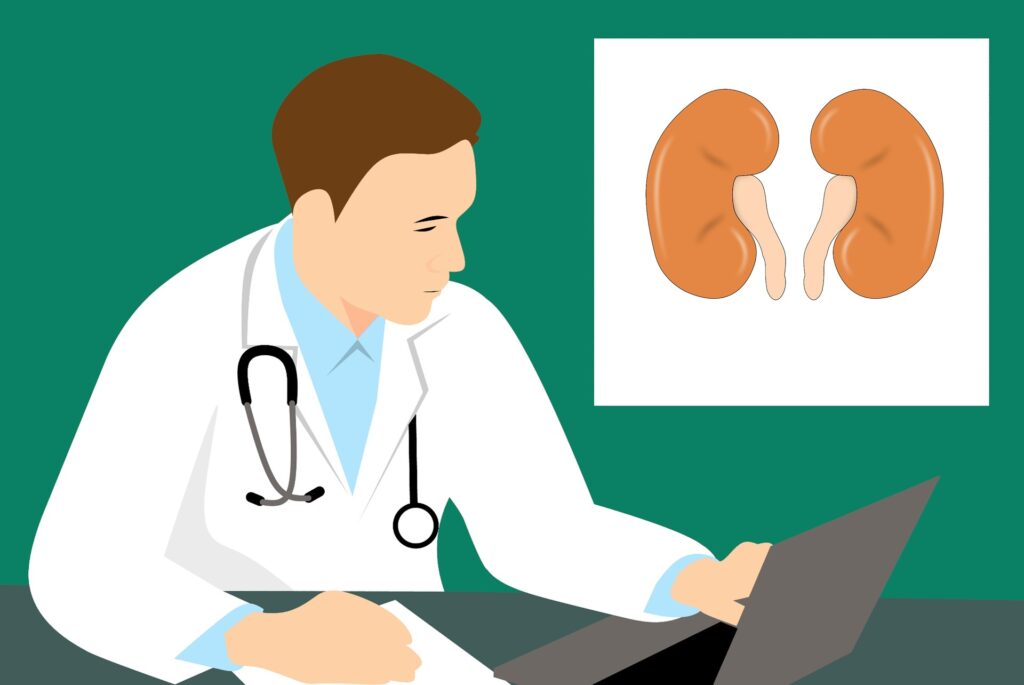
In the United States, kidney disease is a significant public health concern. According to the National Kidney Foundation, more than 37 million American adults have chronic kidney disease (CKD) and millions of others are at increased risk. Additionally, it’s estimate that 90% of people with CKD do not know they have it.
Kidney disease, also known as renal disease, refers to a group of conditions that affect the function of the kidneys. The kidneys are two bean-shape organs locate in the back of the abdomen. That filter waste products from the blood and help regulate the body’s balance of fluids, electrolytes, and minerals.
There are two main types of kidney disease: acute kidney injury and chronic kidney disease. Acute kidney injury is a sudden loss of kidney function that is usually reversible with proper treatment. Chronic kidney disease is a gradual loss of kidney function over time that is usually not reversible.
Risk factors for kidney disease
Risk factors for kidney disease include diabetes, high blood pressure, heart disease, family history of kidney failure, and older age. People who have diabetes or high blood pressure are at increased risk of developing kidney disease. Additionally, people of certain racial and ethnic groups, such as African Americans, Hispanic/Latino Americans, Indian Americans , Alaska Natives, Asian Americans, and Pacific Islanders, are at higher risk of developing kidney disease.
Kidney disease can lead to a number of serious health complications, such as heart disease, stroke, anemia, and nerve damage. However, through early detection and proper management, people with kidney disease can slow the progression of the disease and maintain their kidney function for as long as possible.
Additionally, maintaining healthy blood pressure and blood sugar levels, avoiding smoking and drinking too much alcohol, and eating a healthy diet can help to reduce the risk of developing kidney disease.
Conclusion
The blog post states that these causes of death are based on data from the Centers for Disease Control and Prevention (CDC) and the World Health Organization (WHO).
The post also notes that some of these causes. Such as heart disease and cancer, have been consistently among the leading causes of death for many years, while others, such as COVID-19, have become more prominent in recent times.
The post concludes by emphasizing the importance of understanding the leading causes of death in order to take steps to prevent them and improve public health.

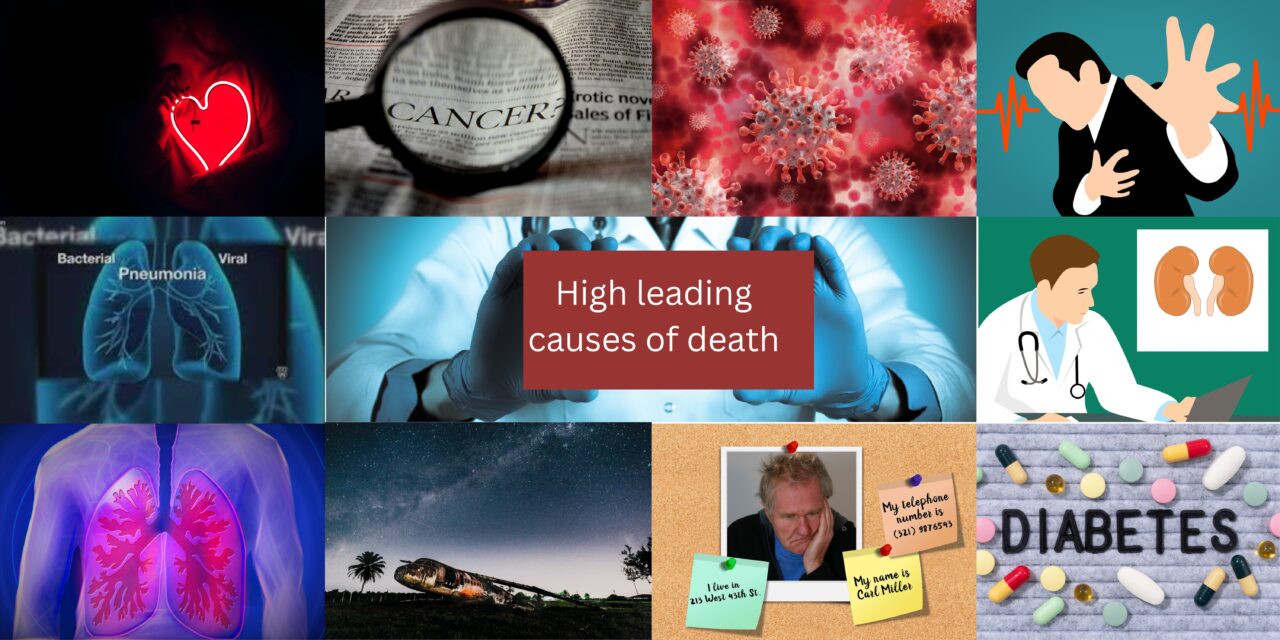




Thanks, I’ve just been searching for information approximately this subject for a while and yours is the best I’ve found out till now. But, what in regards to the conclusion? Are you certain concerning the source?
Would love to always get updated great web blog! .
Pretty section of content. I just stumbled upon your website and in accession capital to assert that I acquire actually enjoyed account your blog posts. Any way I’ll be subscribing to your feeds and even I achievement you access consistently fast.
Your article helped me a lot, is there any more related content? Thanks!
I don’t think the title of your article matches the content lol. Just kidding, mainly because I had some doubts after reading the article.
Can you be more specific about the content of your article? After reading it, I still have some doubts. Hope you can help me.
Your article helped me a lot, is there any more related content? Thanks!
Thanks for sharing. I read many of your blog posts, cool, your blog is very good.
I got good info from your blog
Thank you for your sharing. I am worried that I lack creative ideas. It is your article that makes me full of hope. Thank you. But, I have a question, can you help me?
wonderful post.Never knew this, regards for letting me know.
Its like you read my thoughts! You appear to grasp a lot approximately this, like you wrote the book in it or something. I feel that you just could do with a few p.c. to drive the message home a little bit, however instead of that, this is fantastic blog. An excellent read. I’ll definitely be back.
I’ve been browsing online more than 3 hours today, yet I by no means found any interesting article like yours. It’s lovely worth enough for me. In my opinion, if all webmasters and bloggers made just right content material as you did, the net will probably be a lot more useful than ever before. “Wherever they burn books, they will also, in the end, burn people.” by Heinrich Heine.
It’s actually a great and helpful piece of info. I’m glad that you shared this useful info with us. Please keep us informed like this. Thanks for sharing.
Can you be more specific about the content of your article? After reading it, I still have some doubts. Hope you can help me.
The words are like seeds, planting ideas that blossom into understanding and appreciation.
Your point of view caught my eye and was very interesting. Thanks. I have a question for you.
The ability to convey nuanced ideas with clarity is as alluring as a whispered secret.
I keep listening to the reports talk about getting free online grant applications so I have been looking around for the finest site to get one. Could you tell me please, where could i acquire some?
Every post of Thes is a learning opportunity for me. Thanks for sharing The expertise.
The Writing is a constant source of inspiration and knowledge for me. I can’t thank you enough.
The post has broadened my perspective in ways I didn’t expect. Thank you for that.
Thanks for sharing. I read many of your blog posts, cool, your blog is very good.
I¦ll immediately grab your rss as I can’t in finding your email subscription hyperlink or e-newsletter service. Do you have any? Please permit me recognise so that I could subscribe. Thanks.